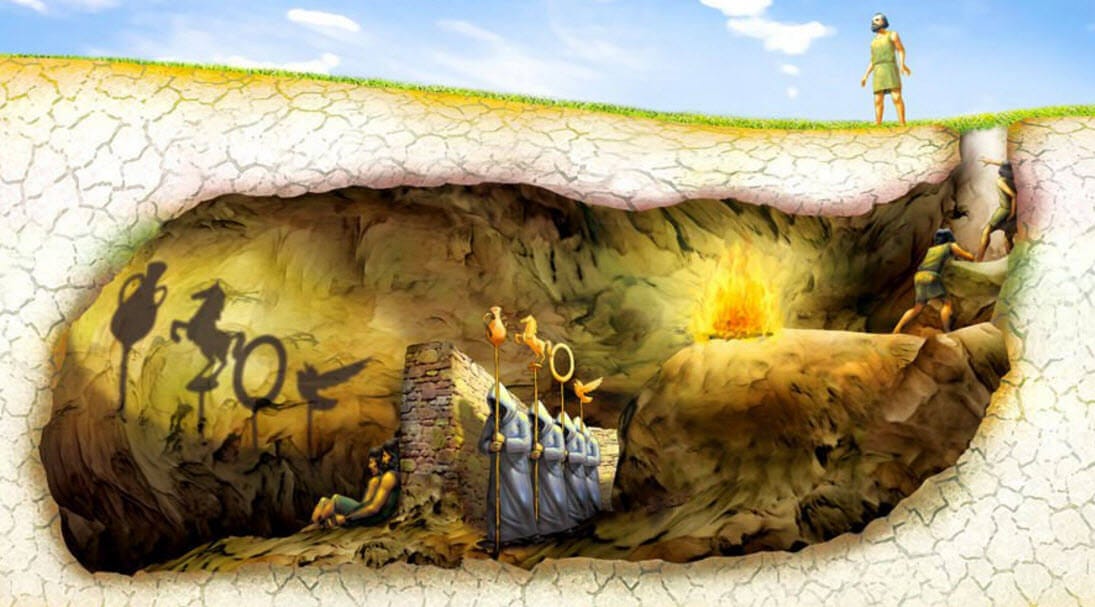Plato's Republic - Part 4
The Allegory of the Cave Writ Large (Structural Analysis of Books 7-10)
In the last post, Plato’s Republic - Part 3, I attempted to unpack the structure of The Republic with a summary analysis of the first six books. In this post, I hope to do the same with the second half of the work, that is, books seven through ten.
Book Seven begins the descent on the structural road map. Here Socrates outlines the famous allegory of the cave, an analysis of education that, in essence, accounts for the fundamental injustice in the city. The cave is related to the doctrine of the line in Book Six. That which is inside the cave is seen but not intellected, and that which is outside the cave, in the light of the sun, is that which is intellected but not seen.
In the allegory, Socrates describes “human beings as though they were in an underground cave-like dwelling.” Having had their legs and necks in bonds since childhood, these cave-dwellers have been forced to face a wall in which shadows of various artifacts are regularly cast from a wall like that used in a puppet show, but placed in front of “a fire burning far above and behind them.”
The prisoner's name the things they see as they go by and give one another honors for being the quickest to name them. Additionally, they hear echoes of the voices of the puppeteers they cannot see from the shadowed wall and suppose them to be the voices of the shadows they think are realities.
Keep reading with a 7-day free trial
Subscribe to BOOKS AND LETTERS to keep reading this post and get 7 days of free access to the full post archives.



